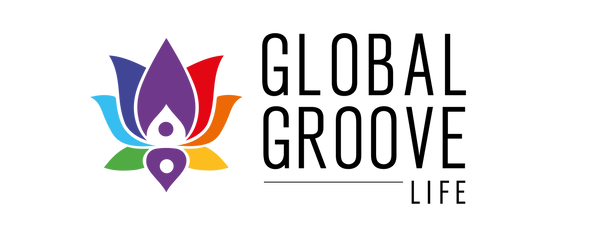The History of Fair Trade
Greg HopeShare
Here at Global Groove Life we’re proud of our Fair Trade certification, and we’re proud to be part of the global Fair Trade movement.
That movement has been riding a groundswell since the late 1940s, when a handful of religious and political groups, morally incensed by the horrors of World War Two, started started developing supply chains for from a small number of developing countries.
The products they started producing were largely sold into local economies - there was not enough awareness or demand at the time for department stores or chains to stock the cross-stitch and jute products.
It was not until the 1960s that Fair Trade really started to evolve into a social force.

The 60s are famous now for their political and social upheaval, and the blooming focus on social responsibility and individual ethics were one positive outcome.
At this time, students and young political players realised that boosting local economies was a much more effective way to help people than the scattershot approach to aid that most Western countries were applying.
In 1968, the UN adopted the popular slogan from the student movement - “Trade, not Aid.” That was the same year that Whole Earth Catalog, a broadsheet in the USA, started connecting producers in developing nations with the retailers and consumers who would start trading directly with them, effectively bypassing the bottlenecks of large corporate buying procedures.
By the time the early 1970s rolled around, dozens of ‘worldshops’ had opened around Europe, with volunteers running the stores to sell goods produced to fair trade standards in the developing world.
The 70s also saw a much greater proportion of individuals getting involved in Fair Trade. With many developing nations excluded from international trade on a political basis, thousands of volunteers took to selling products from their homes, churches and parks to support farmers in places like Angola and Nicaragua. This helped improved the general visibility of the fair trade movement, and exposed thousands more people to the concept of buying responsibly.
The Fair Trade movement faced a crisis point in the early 1980s. Many retailers felt that Fair Trade products often looked dated, and they were having trouble trading off the declining novelty factor. Demand for ethically sourced products plateaued, and a fall in commodity prices meant that the industry had to restructure - and quickly - to maintain any momentum.
Into the 1990s, many of these concerns were addressed, and ethical products became very successful in the Western retail markets.
Handicrafts slowly regained their popularity, maintaining the lion’s share of the Fair Trade industry. The emergence of agricultural products like coffee, tea, rice, nuts, cocoa, dried fruit, sugar and spices was key in the continuing growth of the industry.
A hugely important event in the development of Fair Trade was the introduction of certification. Up until this point, there has been no real regulation on the products being promoted as ethically sourced. In 1988, the first certification board was created in the Netherlands. This independent certification meant that Fair Trade products could be sold far beyond the confines of the little European worldshops.
At this point, Fair Trade sales really started taking off, as products started being stocked in large chains and department stores, removing the serious inconvenience consumers had previously faced in obtaining these products.
It also gave retailers and consumers alike the confidence they had previously been lacking - that they were truly paying for a product that would benefit the producer.
Soon enough, certification organizations had popped up all over the world, and in 1997, Fairtrade Labelling Organizations International (FLO) had standardized the global certification process. FLO now sets the standard all Fair Trade products must meet, how inspections are conducted, how support is provided to producers, as well as harmonizing the message over Fair Trade between participating organizations.
These days, in order to be approved to carry the Fair Trade Certified stamp, the product in question must meet some key criteria:
-
Crops must be grown and harvested according to FLO standards
-
The supply chain must be monitored by FLO to guarantee the product’s integrity
-
The working conditions of the producers must be safe and healthy
-
Producers must be paid a living wage and not face exploitation
-
The organization must not engage any child or slave labor
-
The production process must protect and conserve the local environment
-
The organization must facilitate social development
These days, the proportion of Fair Trade goods on the market has switched from what it was throughout the 1980s and 1990s. Agricultural products now lead the charge, with a huge variety of goods falling under Fair Trade certification: bananas, mangos and oranges; sugar, tea and coffee; cocoa beans and cocoa; honey, nuts, seeds and oils; rice, quinoa, spices and wine. Handicrafts - such as clothing, jewelry, yoga accessories and homewares - now account for about a third of the ethical goods on offer.
